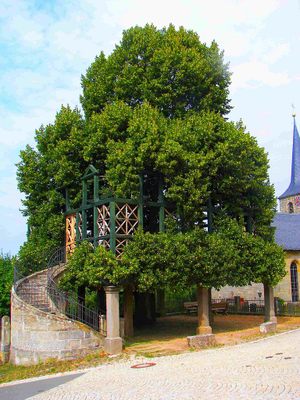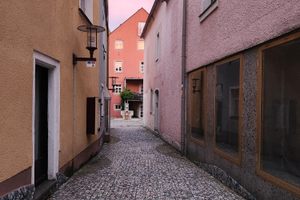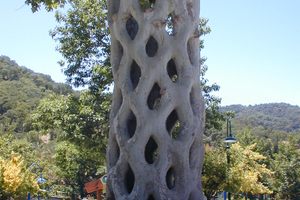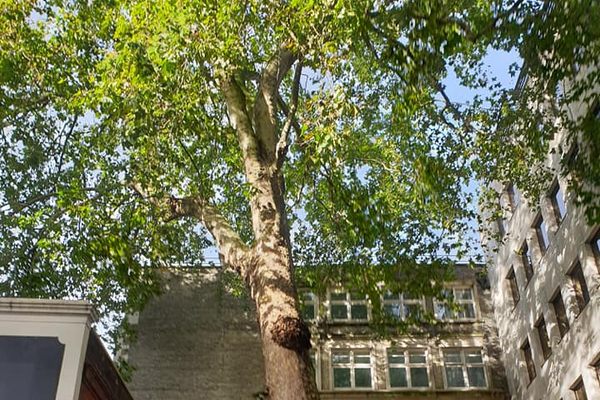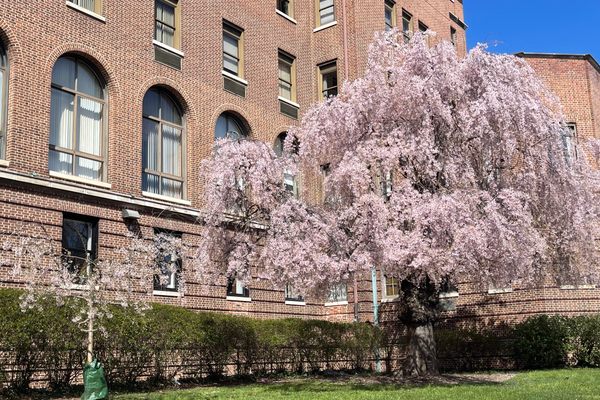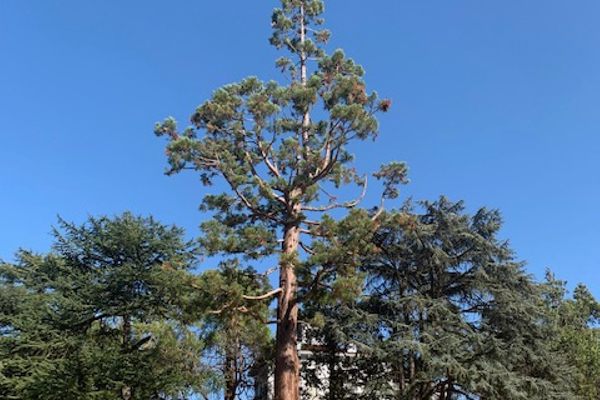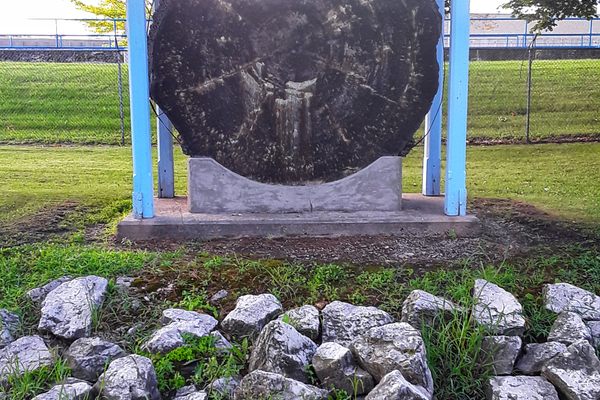About
At the center of many German villages, it used to be common to find a old linden tree with a sturdy trunk and large, spreading branches. Often, these are called "Tanzlinden"—dance lindens—and they served as a gathering place and were frequently the site of celebrations.
Some German villages, though, had dance lindens where people actually danced among the branches.
A true Tanzlinde had a sort of special treehouse built around its trunk. The branches of the tree were guided horizontally, so that they could serve as the base of a dance platform. (The branches wouldn't hold the entire weight of the platform, though.) The branches might also be trained to create leafy walls to surround the platform. At certain festivals, the townspeople would gather on the platform, a band would play, and they could spend days dancing.
There are few tree-borne dancing platforms left in Germany today, but in Franconia, there are three Tanzlinden connected by a bike trail. Limmersdorf's tree is the oldest; believed to be planted in 1686, it's been in continuous use as a dance tree for centuries. Langenstadt and Peesten have had to replant their trees, but Peesten's new structure recreates the Tanzlinde hall used from the late 16th century to 1947.
Related Tags
Community Contributors
Added By
Published
December 28, 2017
Sources
- https://www.thurnau.de/freizeit-kultur-tourismus/sehenswuerdigkeiten/tanzlinden/
- https://www.fraenkische-schweiz.com/de/poi/detail/559a8f49975a70b82c98beb9
- https://www.monumente-online.de/de/ausgaben/2015/1/die-kerwa-und-der-tanz-auf-der-linde-.php#.WjAmSLQ-fBJ
- http://lilianausvat.blogspot.com/2014/10/sacred-trees-dance-tree-or-tanzlinde.html#.WisV87Q-fB
- https://www.thurnau.de/freizeit-kultur-tourismus/sehenswuerdigkeiten/tanzlinden/

